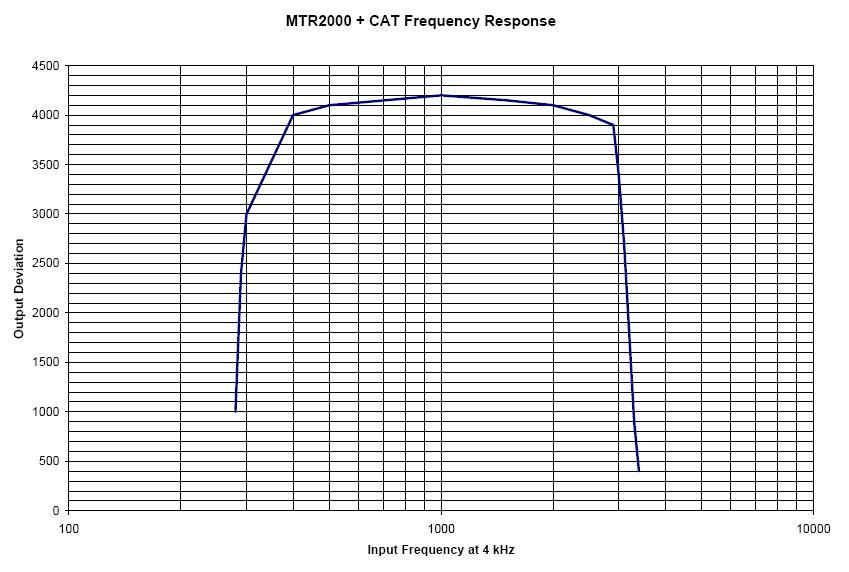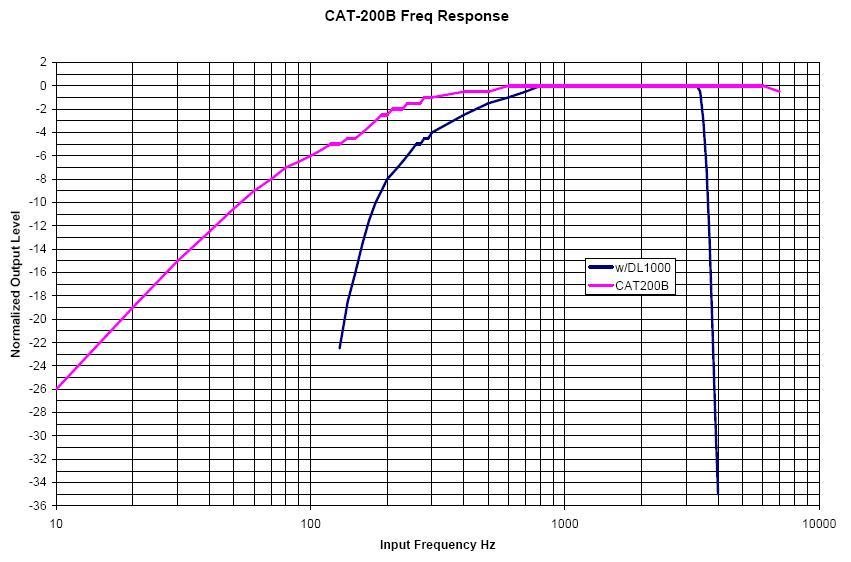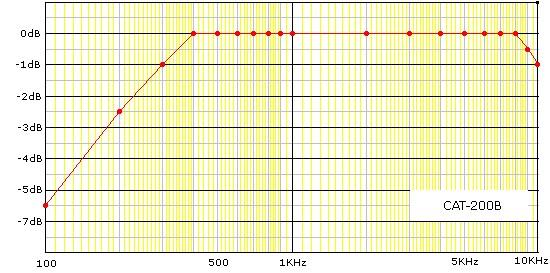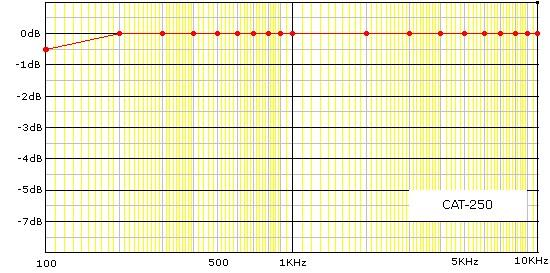Back to Home
DL-1000C Audio Delay Board
Audio Frequency Response
By Robert W. Meister WA1MIK

|
Up one level (CAT Index) Back to Home |
CAT-200B Repeater Controller and DL-1000C Audio Delay Board Audio Frequency Response By Robert W. Meister WA1MIK |

|
I recently interfaced a CAT-200B repeater controller with the DL-1000C audio delay board, to a Motorola MTR2000 UHF station. I used the MRTI interface connector for transmit and receive audio signals. I had already measured the raw frequency response of just the station and found it to be flat from about 300 to 3400 Hz with standard pre-emphasis on transmit audio and standard de-emphasis on receive audio.
When I connected the CAT-200B controller, I measured the complete system frequency response by defeating receive and transmit PL, feeding a modulated signal into the receiver, and measuring the deviation of the signal coming out of the transmitter. The results for the full system are shown in the graph below.

After seeing the frequency response of the whole system, I wondered whether it was the MTR2000 station or the CAT equipment that was causing the somewhat limited bandwidth. I removed the CAT equipment and measured the frequency response of the CAT200B controller with the DL1000C delay board. The results are shown as the BLUE trace in the graph below. I then bypassed the DL-1000C audio delay board and measured the frequency response of just the CAT-200B controller. The results are shown as the VIOLET trace in the graph below.

You'll notice that the low frequency response of just the CAT200B controller is similar to what CAT-Auto provides: 6dB down at 100 Hz, but when you add the DL1000C delay board, the low frequency response is much worse. I suspect that a capacitor change would be needed in both units to correct this issue.
Similarly, the bare CAT200B controller has excellent high-frequency response but this is limited to around 3600 Hz by the DL1000C delay board. This can be explained by the fact that the codec used in the DL1000C converts the analog audio to digital, delays it, then converts it back to analog - at a specific sampling frequency - and this reduces the frequency response of the unit to about 3400 Hz. As normal voice only covers about 300-3000 Hz, this bandwidth is probably acceptable in many installations.
Some CAT controllers - including the CAT-200B - use 0.1uF input coupling caps and this reduces the low-frequency response, according to the graph below (provided by CAT-Auto).

Other CAT controllers use 2.2uF input coupling caps and this increases the low-frequency response, according to the graph below (provided by CAT-Auto).

Another article on this web site mentions replacing the 0.1uF input coupling capacitors with 2.2uF to improve the low-frequency response of the CAT-1000 controller, and this would apply equally well to the CAT-200B controller. This article may have been the reason CAT changed the input coupling capacitor value in their controllers.
The CAT web site has a page that describes how they measured and tested the audio frequency response of many of their controllers. A copy can be found here.
Contact Information:
The author can be contacted at: his-callsign [ at ] comcast [ dot ] net.
Back to the top of the page
Up one level (CAT Index)
Back to Home
This page originally posted on 20-Nov-2012
Article text, graphs, and hand-coded HTML © Copyright 2012 by Robert W. Meister WA1MIK.
This web page, this web site, the information presented in and on its pages and in these modifications and conversions is © Copyrighted 1995 and (date of last update) by Kevin Custer W3KKC and multiple originating authors. All Rights Reserved, including that of paper and web publication elsewhere.